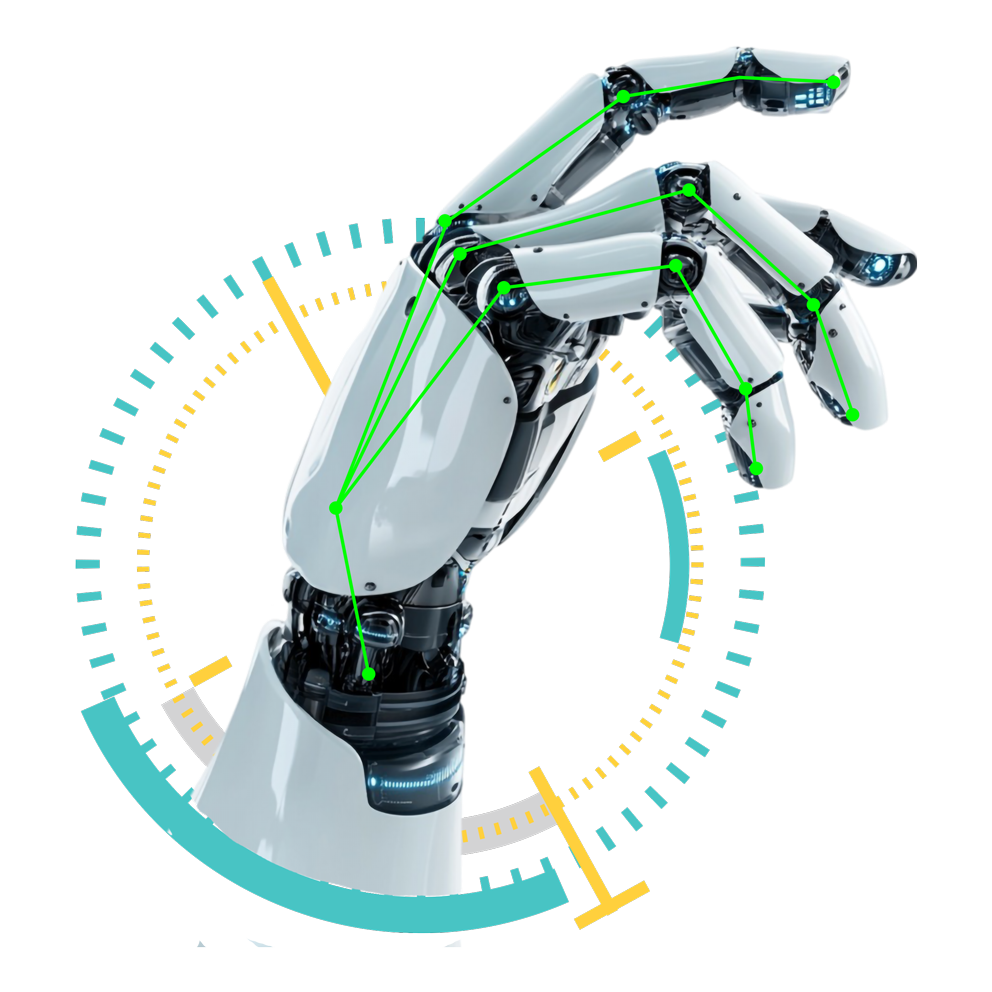AI Hand Gesture
AI-Based Hand Gesture Recognition for Text-to-Speech Communication

Project Definition:
For individuals with hearing and speech impairments, communicating with non-sign language users can be challenging. This project focuses on developing an AI-driven system that translates hand gestures into spoken words using Machine Learning, OpenCV, and Text-to-Speech (TTS) technology. By detecting predefined sign language gestures and converting them into speech, this system will enhance accessibility and communication.
Research Goals:
• Develop a real-time hand gesture recognition system for sign language detection.
• Implement TTS technology to convert detected gestures into speech output.
• Improve gesture classification accuracy using deep learning techniques.
• Test the application for usability and real-world communication effectiveness.
Methodology:
• Data Collection: Collect a dataset of sign language gestures using OpenCV and MediaPipe.
Label data for classification (e.g., “Hello,” “Thank you,” “Help”).
• Model Training: Train a CNN-based model (TensorFlow/Keras, PyTorch) for gesture recognition. Use transfer learning to improve accuracy and reduce training time.
• Real-Time Gesture Recognition: Implement OpenCV for real-time hand tracking. Use MediaPipe Hand Tracking for more accurate gesture detection.
• Text-to-Speech Integration: Convert recognized gestures into text. Use a TTS library (gTTS, Pyttsx3) to generate speech output.
• Application Development: Develop a GUI-based desktop or mobile application. Provide real-time visual feedback and speech output.
• Testing & Optimization: Evaluate with hearing and speech-impaired users. Optimize the model for different skin tones, hand sizes, and lighting conditions.
Project Objectives:
Objective 1: Enable speech-impaired users to communicate via hand gestures.
Objective 2: Develop a real-time, user-friendly application.
Objective 3: Improve gesture recognition accuracy with deep learning. accident scenes. The focus is on evaluating the effectiveness of drones in quickly capturing accident scenes with accuracy, improving the speed of insurance claims, supporting law enforcement investigations, and enhancing the overall documentation process for vehicle accidents.
